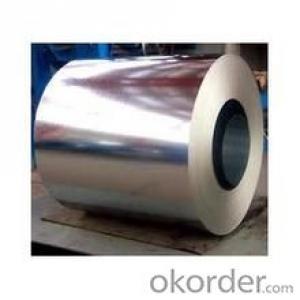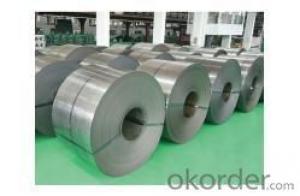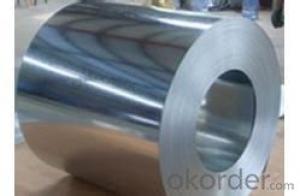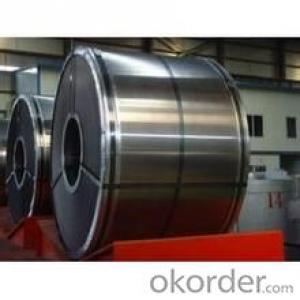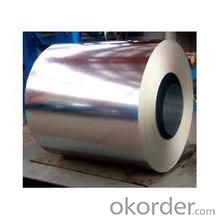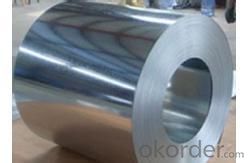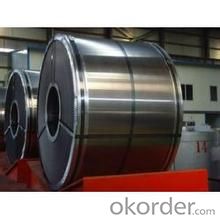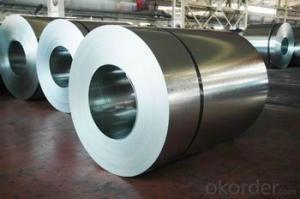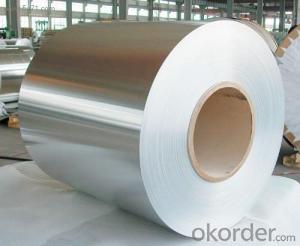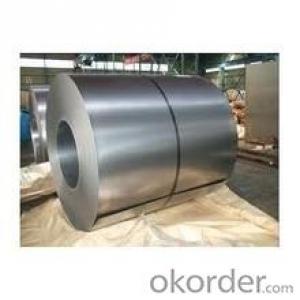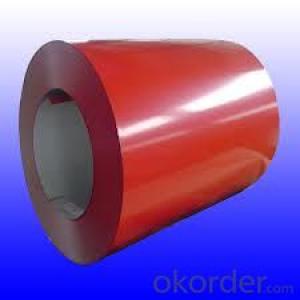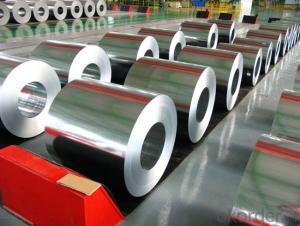GOOD HOT-DIP GALVANIZED/ ALUZINC STEEL in China
- Loading Port:
- China main port
- Payment Terms:
- TT OR LC
- Min Order Qty:
- 30 m.t.
- Supply Capability:
- 5000000 m.t./month
OKorder Service Pledge
OKorder Financial Service
You Might Also Like
Product Description:
THICKNESS:0.18mm-1.5mm
WIDTH:900mm-1250mm
COATING MASS:AZ30-AZ150
SPANGLE:Minimized Spangle,Zero Spangle
SURFACE TREATMENT:N0on or Chromated,Non or Oiled,Non or Anti Finger Print
COIL INNER DIAMETER:508mm/610mm
COIL WEIGHT:3mt-7m
Applications of our Galvalume Coil:
Galvalume Coil widely used for roofing products, It is also the ideal base material for Prepainted Steel Coil.
1. roofing
2. gutters
3. unexposed automotive parts
4. appliances
5. furniture
6. outdoor cabinetry
Hot-dip galvanized steel coils are available with a pure zinc coating through the hot-dip galvanizing process. It offers the economy, strength and formability of steel combined with the corrosion resistance of zinc. The hot-dip process is the process by which steel gets coated in layers of zinc to protect against rust. It is especially useful for countless outdoor and industrial applications.
Production of cold formed corrugated sheets and profiles for roofing, cladding, decking, tiles, sandwich walls, rainwater protective systems, air conditioning duct as well as electrical appliances and engineering.
- Q: what is the differance between ceramic and stainless steel headers and 4-2-1 and 4-1 and which are better for racing and should i get ceramic or stainless steel headers???? for a 98 civic
- This Site Might Help You. RE: ceramic vs stainless steel headers HELP!!!!!!!!!!!!!! for a 98 civic? what is the differance between ceramic and stainless steel headers and 4-2-1 and 4-1 and which are better for racing and should i get ceramic or stainless steel headers?? for a 98 civic
- Q: How are steel coils used in the production of conveyor systems?
- Steel coils are used in the production of conveyor systems as they are transformed into various components such as conveyor belts, rollers, and frames. These components provide the necessary strength, durability, and support required for efficient material handling and transportation in conveyor systems.
- Q: explain what happen if carbon steel is exposed to an oxygen rich atmosphere at elevated temperature inside a furnace.
- Blowing oxygen or air rich in oxygen through molten carbon steel is a way of lowering the carbon content. The properties of carbon steel depend very much on the carbon content . too much and it is very brittle. It is all governed by a complex phase diagram. If the steel isn't actually melted, then only insignificant effects at the surface will occur.
- Q: How are steel coils inspected for weldability using welding tests?
- A range of welding tests can be utilized to inspect steel coils for their weldability. The bend test is a common approach where a segment of the coil is cut and bent to assess the weld's quality. This evaluation helps identify any brittleness or flaws that could compromise its integrity. Furthermore, the guided bend test is conducted to evaluate the weld's ability to endure bending without cracking or breaking. Another technique employed is the macro etch test, which involves cutting a cross-section of the coil and applying a chemical solution to etch it. This test effectively exposes imperfections or irregularities in the weld, such as porosity, slag inclusions, or fusion deficiencies. Moreover, the hardness test measures the weld's hardness, which is crucial as excessive hardness can lead to cracking or brittleness, while insufficient hardness may cause weld failure under specific conditions. Additionally, non-destructive testing methods like ultrasonic testing, magnetic particle inspection, or radiographic examination can be employed to detect internal defects, such as cracks or voids, in the steel coil welds without causing any damage to the material. Conducting comprehensive inspections through these welding tests is essential to ensure the quality and weldability of steel coils before their use in various applications. By identifying and addressing potential issues, these inspections guarantee that the steel coils meet the necessary standards for weldability and structural integrity.
- Q: What are the different types of steel alloys used in coil production?
- There are several types of steel alloys used in coil production, including carbon steel, stainless steel, and high-strength low-alloy (HSLA) steel. These alloys offer varying levels of strength, corrosion resistance, and formability, making them suitable for different applications in industries such as automotive, construction, and manufacturing.
- Q: How do steel coils contribute to the energy sector?
- Steel coils contribute to the energy sector by being a crucial component in the construction and maintenance of power plants, transmission towers, and renewable energy infrastructure. These coils are used to manufacture equipment like turbines, generators, transformers, and pipelines, which are vital for the efficient generation, transmission, and distribution of electricity. Additionally, steel coils are also used in the manufacturing of energy-efficient appliances and vehicles, further promoting sustainability in the energy sector.
- Q: What are the key players in the steel coil manufacturing industry?
- Large multinational companies with significant market share and influence dominate the steel coil manufacturing industry. Among the prominent players are: 1. ArcelorMittal, the world's largest steel producer, operates in over 60 countries and offers a diverse product portfolio. 2. Nippon Steel Corporation, a leading Japanese steelmaker, holds a prominent position in the global steel coil manufacturing market, particularly in the automotive and construction sectors. 3. POSCO, based in South Korea, is renowned for its high-quality steel products and advanced technology in steel coil manufacturing. 4. Baosteel Group Corporation, the largest steel manufacturer in China and globally, boasts a vast range of steel products, including steel coils, and excels in research and development capabilities. 5. Thyssenkrupp AG, a German multinational conglomerate, plays a significant role in the steel coil manufacturing industry, focusing on innovation and sustainability across a diverse product range. 6. United States Steel Corporation, a leading American steel producer, holds a crucial position in the steel coil manufacturing industry, particularly in the automotive, construction, and energy sectors. 7. JFE Holdings, Inc., a Japanese steel conglomerate, is a key player in the steel coil manufacturing industry, known for its customer-oriented approach and high-quality steel products. These companies represent a fraction of the key players in the steel coil manufacturing industry, as numerous others contribute to this sector. The industry is highly competitive, and these companies consistently strive to innovate, enhance efficiency, and meet the evolving demands of the market.
- Q: What are the standard dimensions and weights of steel coils?
- The standard dimensions and weights of steel coils can vary depending on the specific type of steel and its intended use. However, some common dimensions include coil widths ranging from 600mm to 2000mm, coil outer diameters ranging from 800mm to 2100mm, and coil weights ranging from 3 to 25 metric tons. It is important to note that these dimensions and weights can be customized to meet the requirements of different industries and applications.
- Q: How are steel coils stored to prevent damage?
- In order to prevent damage and maintain their integrity, steel coils are stored in a manner that is designed to minimize risks. One common approach involves horizontally stacking the coils, which helps evenly distribute the weight and reduces the likelihood of deformation or damage. Additionally, each layer of coils is often separated by wooden or steel dunnage to provide support and prevent shifting during storage or transportation. To protect the coils from harm, they are frequently stored indoors or in covered areas to shield them from exposure to the elements. This precaution serves to prevent rusting or corrosion, which could compromise the steel's quality. In situations where outdoor storage is necessary, weather-resistant tarps or protective coatings may be used to minimize the potential impact of rain, snow, or sunlight. Moreover, it is essential to consider the height at which the coils are stacked in order to avoid applying excessive pressure on the lower coils. To prevent damage, coils are typically stacked in a manner that ensures the weight from the upper layers is evenly distributed across the lower ones. This may involve the utilization of specialized stacking equipment or racks that are specifically designed to handle the weight and dimensions of the coils. In summary, the proper storage of steel coils entails careful attention to weight distribution, protection from the elements, and minimizing contact between coils to prevent damage and preserve their quality.
- Q: What really is the difference between stain-less steel and iron? I only know that iron is an element, and stain-less steel is an alloy...but what else is there?
- Iron is an element. Steel is an alloy made of iron. Mild Steel, or Carbon Steel is made from at least 98% iron in a preocess that involves controlled application of heat. Other Steel Alloys contain significant ammounts of other elements. In the case of Stainless steel, these elements are Nickel and Chromium. In plain steel, the carbon content varies from 0.15% to about 1.4%. The higher the carbon content, the harder the steel is. Over 1.4% carbon, the steel becomes so hard that is also becomes brittle. Carbon content is also used to control the hardness of stainles steel. Because Stainless steel is corrosion resistant, it is often used for making food preparation equipment. Aluminum is NOT a common element in steel. Aluminum reacts to silicon content similarly to the way Iron reacts to carbon content. High strength Aluminum alloys often contain Magnesium.
Send your message to us
GOOD HOT-DIP GALVANIZED/ ALUZINC STEEL in China
- Loading Port:
- China main port
- Payment Terms:
- TT OR LC
- Min Order Qty:
- 30 m.t.
- Supply Capability:
- 5000000 m.t./month
OKorder Service Pledge
OKorder Financial Service
Similar products
Hot products
Hot Searches
Related keywords
